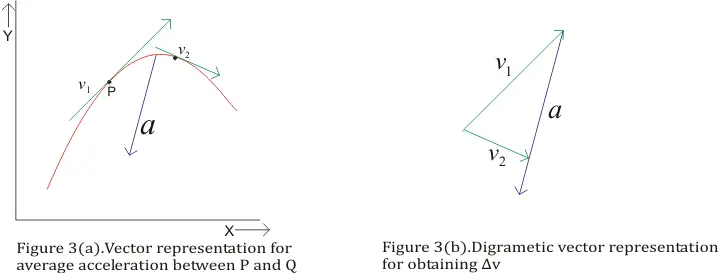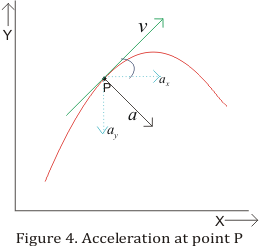4. Average and instantaneous acceleration
- Suppose a particle moves from point P to point Q in x-y plane as shown below in the figure

- Suppose v1 is the velocity of the particle at point P and v2 is the velocity of particle at point Q
- Average acceleration is the change in velocity of particle from v1 to v2 in time interval Δt as particle moves from point P to Q. Thus average acceleration is

Average accelaration is the vector quantity having direction same as that of Δv. - Again if point Q aproaches point P, then limiting value of average acceleration as time aproaches zero defines instantaneous acceleration or simply the acceleration of particle at that point. Ths, instantaneous acceleration is
- Figure below shows instantaneous acceleration a at point P.

- Instantaneous acceleration does not have same direction as that of velocity vector instead it must lie on the concave side of the curved surface.
- Thus velocity and acceleration vectors may have any angle between 0 to 180 degree between them.
0 comments:
Post a Comment